Math Monday: Plenty of Polyhedra
Today’s will be the last Bridges column, at least until next year — not because there isn’t plenty more to share, but because there have just been too many other things stacking up on the Math Mondays shelves. The final installment for this year is devoted to polyhedra and some of the incredibly diverse ways they can be presented.
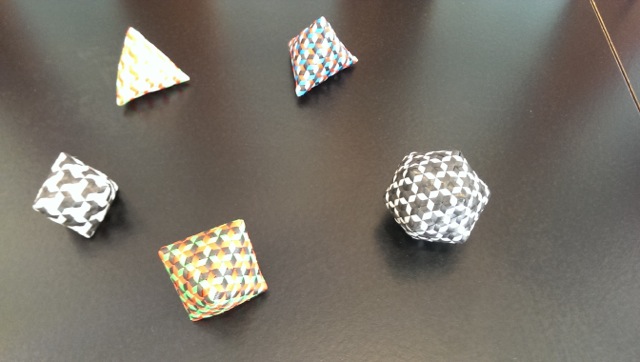
And if you relax the rules a bit, polyhedra can be infinite regular arrangements of polygons that extend infinitely throughout all of space, as hinted at in “The {3,8} Polyhedron with Butterflies” by Doug Dunham:
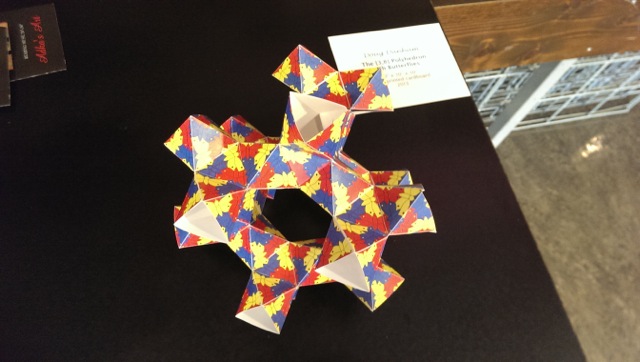
or in “Window into Infinity: A Sample of the Murhombicuboctahedron” by S. Louise Gould.
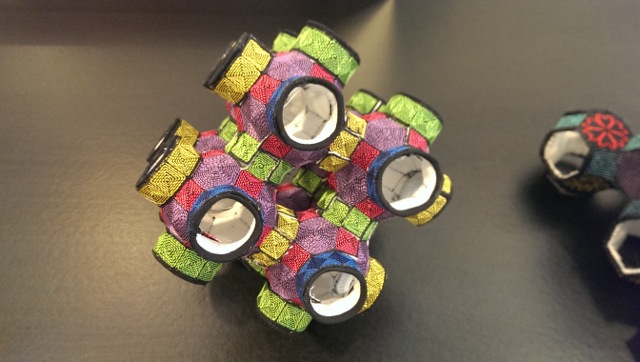
If you combine weaving and infinite polyhedra, you might end up with something like this,
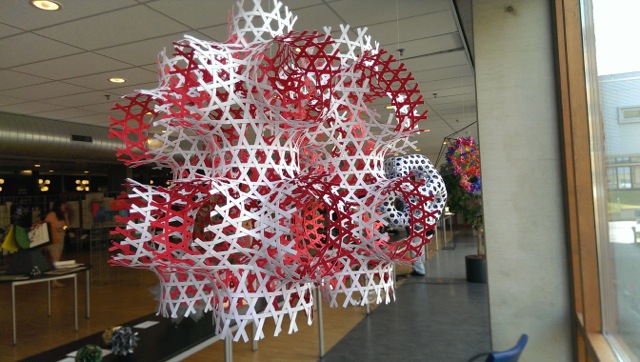
a piece by Alison Grace Martin entitled “Superficial Study (1) Intertwined Labyrinths,” which has ended up somewhere between a polyhedron and the minimal surface known as the Schwarz P surface.
Polyhedra can be made out of all kinds of things, as you’ve seen in previous Math Mondays installments, but I don’t believe we’ve ever seen them made out of toy sunglasses before: (“Seeing Stars” by Andrea Hawksley)
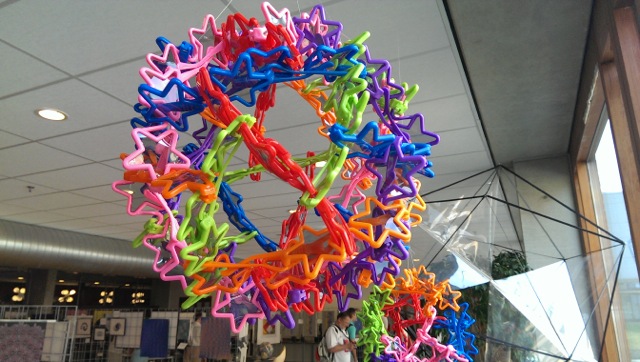
And finally, to cap off coverage of Bridges 2013, polyhedra can also be majestic compositions of hundreds of finely crafted wooden facets:

Roland Gagneux, “Zonohedrified Crossed Heptagrammic Cupolaic Blend”
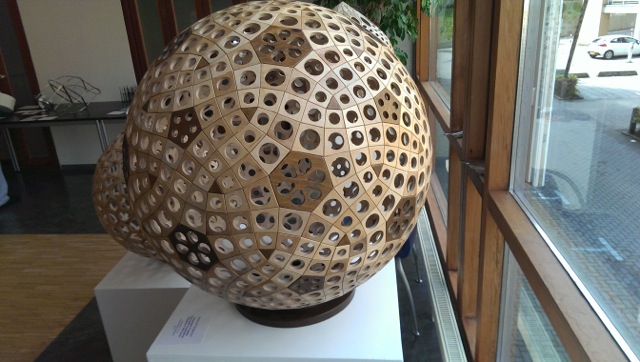
Roland Gagneux, “Expanded Propello Truncated Icosahedron Polyèdre à 902 faces.”
This article first appeared on Make: Online, October 14, 2013.